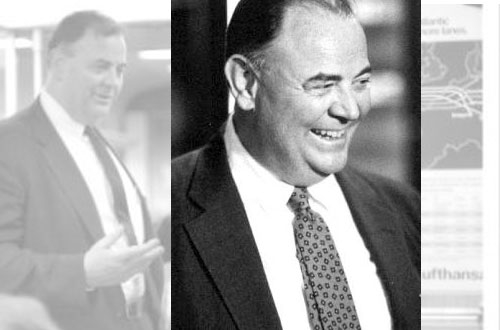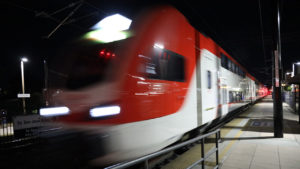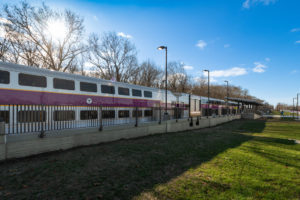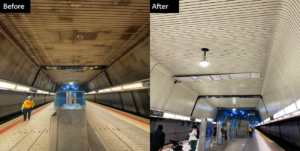Hoppe, past LIRR president, passes away
Written by Jenifer Nunez, assistant editor
Charles W. Hoppe, who served as Metropolitan Transportation Authority (MTA) Long Island Rail Road's (LIRR) 34th President, from April 2, 1990, to August 31, 1994, passed away December 22, 2015.
“Hoppe initiated strategic rethinking in a number of areas, from developing new growth opportunities, to rethinking the role of freight, to identifying improved types of cars and locomotives, right down to the language used to run the railroad on a day-to-day basis,” said MTA Chairman and Chief Executive Officer Thomas Prendergast, who in 1994 succeeded Hoppe as president of LIRR. “The results of his efforts were both far-reaching and long term. He left the region with a railroad that was in far better shape than it had been.”
The LIRR’s on-time performance increased four percentage points, to 93 percent as of 1994, from 89 percent in 1989 and ridership increased. Measures of train car reliability improved during his tenure. At the same time, the railroad gained a restored confidence from federal funding partners and embarked on a major rehabilitation of Harold Interlocking, the crucial complex of switches in Sunnyside, Queens, where the LIRR’s tracks merge with Amtrak’s Northeast Corridor and it undertook significant upgrades to its portion of Penn Station. The work at Penn included improvements to the LIRR’s passenger concourse on the lower level, modernizing the signal system in partnership with Amtrak and creating Penn Station Central Control, which directs the safe movements of more than 1,000 trains per day.
“Virtually every metric that we measure on a month-to-month basis improved under Chuck Hoppe,” Prendergast said. “But the most tangible of his improvements was the complete transformation of Penn Station. Chuck led the railroad through the difficult process of overcoming decades of neglect to modernize the appearance and functionality of the station. Those improvements helped start a ridership increase that has continued through to the present day, so much so that Penn Station is ready to be updated again.”
The LIRR also began working to stimulate freight traffic under Hoppe, a line of business that had been fairly dormant, but has proven popular under the auspices of an outside company, the New York & Atlantic Railway. Internally, Hoppe oversaw a reorganization of the management of the railroad that resulted in a reduction of overall headcount by 10 percent and the creation of individual Branch Line Managers responsible for each branch, a system that is still in use and was carried over through the MTA to New York City Transit.
“The Long Island has a lot of complexities to it, and probably is the most complex railroad in North America,” he said shortly after being appointed as president. “One of my goals is to get people thinking positively about the LIRR. It is a good railroad that can be better.”
With his belief that the railroad could build on its existing strengths, Hoppe launched customer service and market development initiatives, including an effort to encourage off-peak ridership that has been followed by a 52 percent increase in off-peak ridership.
He also initiated a Network Strategy Study, a blueprint for the railroad’s growth to the present day. That study evaluated many options for replacing the railroad’s diesel fleet, eventually deciding on the combination of diesel and dual mode locomotives and today’s two-level coaches with the more comfortable two-by-two seating arrangement.
Hoppe, who was 80 at the time of his passing, insisted on high standards and, perhaps, most emblematic of that was his belief that even the words used by staff were an important influence and reflection on the railroad’s culture. With that in mind, he mandated that all railroad officials refer to its users as “customers” as opposed to “riders” or “passengers” in order to emphasize the railroad’s responsibilities and duties to those it serves. That practice continues to this day at the LIRR and has become standard practice throughout the MTA family of agencies.
“He had a big heart and loved to ‘meet-and-greet’ with customers, both on the train and at Penn Station and ask them how we could improve service,” said John Bennett, who was LIRR vice president of infrastructure under Hoppe.
Hoppe had a quarter century of experience in domestic and international railroad management and consulting at the time he was selected to lead the LIRR. His work included time with the Cleveland Union Terminal Company, Baltimore & Ohio Railroad, U.S. Army, Norfolk Southern and 14 years with Booz, Allen & Hamilton, Inc., where prior to joining the LIRR he directed a major investment strategy study for CityRail, a commuter railroad in Sydney, Australia.





